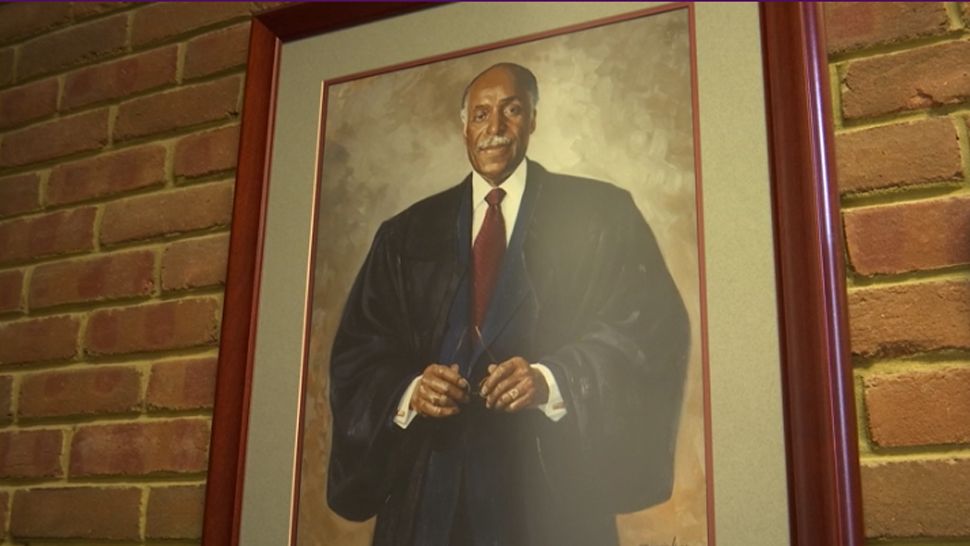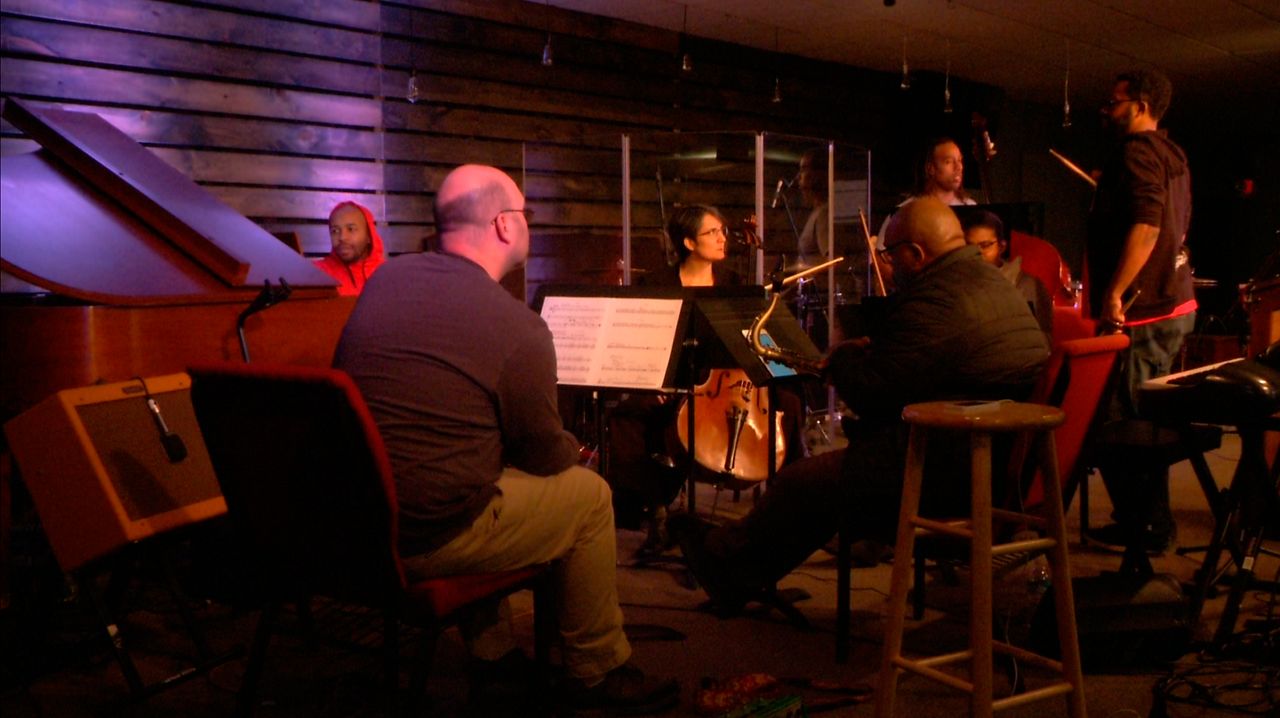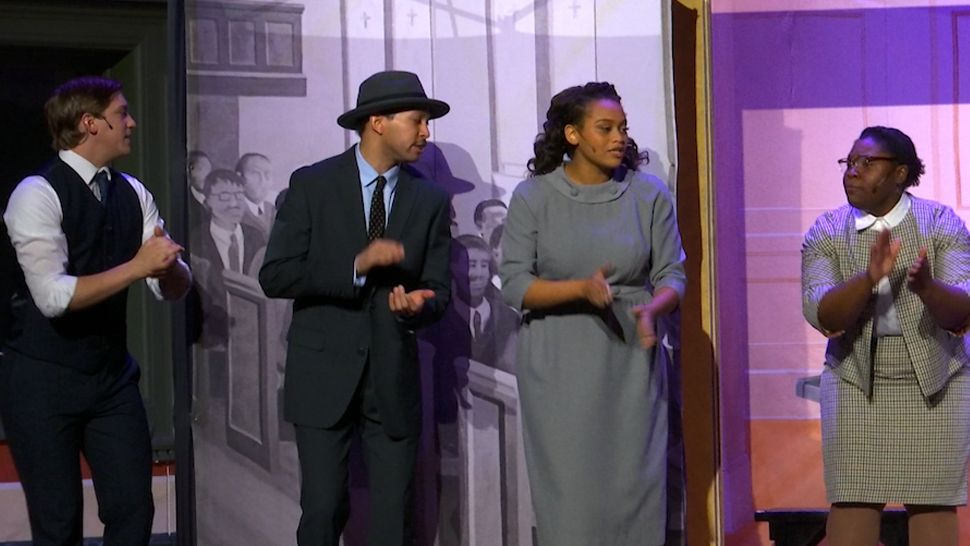CLEVELAND, Ohio — If you're driving through the city of Cleveland, chances are you’ll pass a building Robert P. Madison has helped create.
- He was the first African American architect in Ohio
- He constructed a career that would tear down racial barriers
- The Robert P. Madison firm opened in 1954 and its first project was designed out of a demand for equality in Cleveland
“The Rock and Roll Hall of Fame, that was quite a structure that was quite a building, and I was the associate architect of that, as well as the stadium, the arena, and the Great Lakes Science Center,” said Madison, founder, Robert P. Madison International, Inc.
Madison, who is now 96 years old, is the first African American architect to be registered in the state of Ohio.
And as he reflects on the hundreds of structures he has designed, Madison also recalls the painful past that prompted him to construct a career that would tear down racial barriers.
“My father was a civil engineer. And at that time, nobody would hire him —we don't hire colored people,” said Madison. “I was going to make up everything they didn't let my father do. That was my problem, that was my challenge.”
And a challenge it was.
He graduated from East Technical High School in Cleveland, and was then awarded a scholarship to attend Howard University, where he studied architecture.
“And while there at Howard, in 1941, the Japanese dropped the bombs on Pearl Harbor, which was the beginning of World War II,” said Madison. “I was in the 92nd Infantry Division called the Buffalo Soldiers. And from there, I was a battalion intelligence officer… I was 21 years old.”
When he was 26 years old, back in the United States and eager to get back into architecture, Madison used his G.I. Bill of Rights to continue his studies. But because of his race, doors didn’t easily open for him.
“I entered school here in Cleveland, Western Reserve University, but it wasn't as easy as I thought it was going to be because they didn't want me there and they made it very clear to me, at least the professors didn't want me there,” Madison said.
But Madison worked hard to prove that he belonged there.
“My mother always said you have to be twice as good as anybody else to succeed. And I think with that advice, I believed her.”
After graduating, he worked even harder to find an opening at an architectural firm.
“I went to his office and knocked on the door and when he opened the door I said I will work for you for free for two weeks, and then you can decide if you want to hire me. I had to get in, I had to get in some way,” said Madison.
After staying there for two years and officially becoming registered as an architect, Madison earned a graduate degree from Harvard University and received a Fulbright Scholarship to study in Paris.
Upon returning to Cleveland, Madison realized he would have to be the one to provide a space for minority architects to get their start.
“I said, well, it doesn’t make any sense to teach these young people architecture because there’s no place for them to work when they come out. Somebody’s got to do something and my wife said why don't you?” Madison said.
The Robert P. Madison firm opened in 1954 and its very first project —the Mount Pleasant Medical Center —was designed out of a demand for equality in Cleveland.
“Black doctors could not rent office space in medical office buildings. So, these Black doctors were very aggressive. They said, look we gotta have an office building, and they said, okay well let's get Bob Madison!” said Madison.
Madison’s work took him all over the country
“I was appointed the official architect of the AME church and I built a church in Little Rock, Arkansas, Niagara Falls, Long Island, New York, Washington D.C., Philadelphia, Pittsburgh,” Madison said.
His success would eventually attract global attention.
“In 1965, I received the contract and set sail for Dakar Senegal in West Africa. That was the first time I had ever been in Africa,” Madison said. “I consider the American embassy not only the crowning moment for me professionally, but also in terms of realizing where my origins were and where I came from."
Since then Madison has dedicated his life to ensuring his firm gives everyone equal opportunity.
Now run by his niece Sandra Madison, Robert P. Madison International was the starting point for a successful career for many who still work there today.
“He would come to your desk he would ask you to explain your thoughts,” said Sonita Kazazic, Robert P. Madison International, Inc.
Sonita Kazazic has been working at Robert P. Madison International, Inc. since coming to America from Bosnia in 1994. She says she considers herself lucky to have Madison as a mentor.
"it’s surreal, really, to be fortunate enough to work with Mr. Madison, and especially for me as an immigrant to be fortunate to come here right away,” said Kazazic.
Mr. Madison has done well for himself and others. He is both humble and grateful as he considers his legacy.
“My name is on that building. Madison designed the arena that they play basketball in and that will be there for 100 years. They come and they go, but my buildings will be there,” Madison said.










